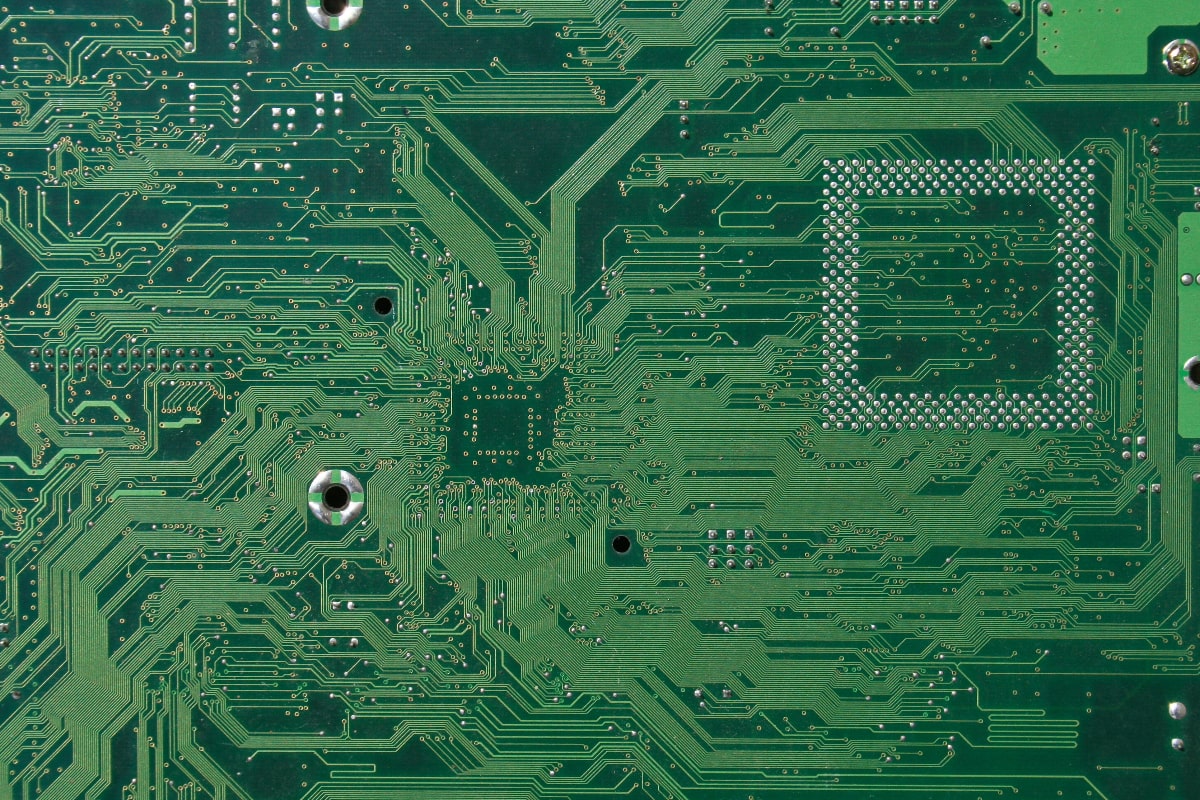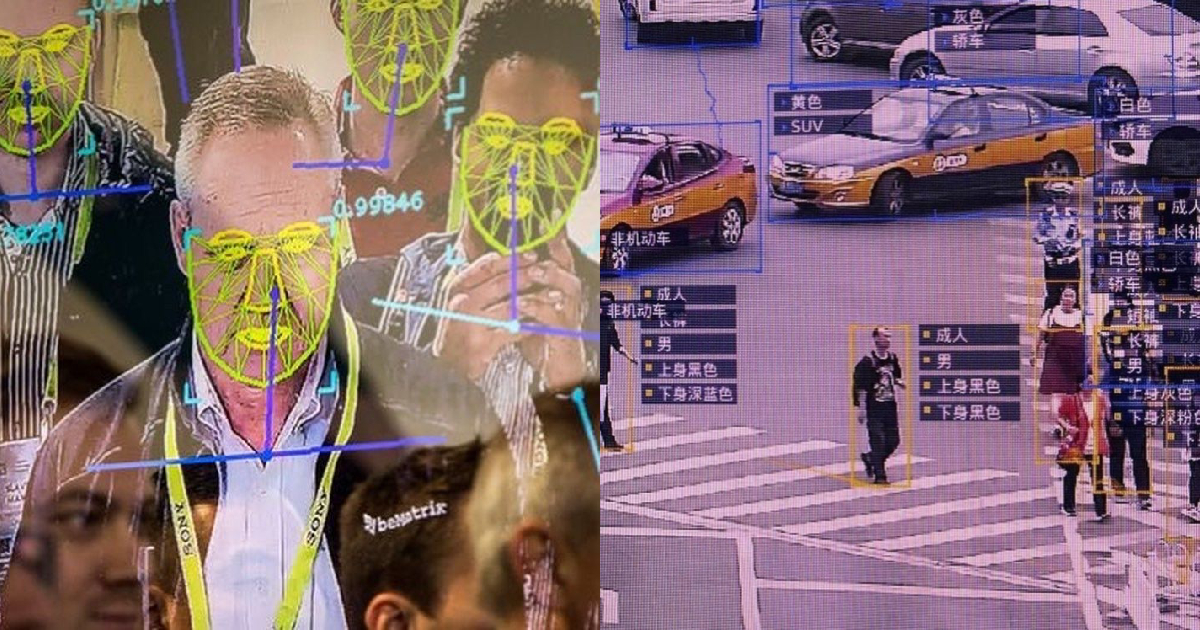This article explores the stages to amended democracy. By removing the inadequate intermediaries elected to represent public opinion, the utilisation of blockchain and other powerful technologies can empower citizens to reliably and truly self-govern.
But, is self-governance desirable? What are the concerns surrounding supercomputers, AI, and blockchain technologies? What would it take to remove human governments and reinstate responsible humanity? What benefits and dangers face society should it become decentralised and autonomous?

Electronic democracy — e-democracy — is the idea of enhancing the system of government through utilisation of 21st-century internet and communication technologies (ICT). Born in the webs of metamorphic 90s, proponents of the idea sought the development of civic technologies and e-governments in varying degrees of humanity. At its core, the purpose of e-democracy is transparency and empowerment of citizens to participate meaningfully in the creation of law.
Since the beginnings of global internet adoption, the World Wide Web underwent visionary progressions. Today, aside from endless internet junk, the ideas of an e-democracy or an electronic government are again weaved into conversation, revised by the possibilities of blockchain technologies.
To what extent are the tokenization of our monetary practices and the digital automatisation of our governance inevitable? Is a democratic technological authority possible? What are the dangers of an electronic government and are they a worthy replacement to global problems of today?
E-government or e-governance?
In its current stage, an e-government is simply the use of devices like computers and the Internet to provide public services to citizens and others within a jurisdiction. This encompasses digital interactions between citizens and government (C2G), between different government agencies (G2G), between government and citizens (G2C), between government and employees (G2E), and between government and businesses (G2B). These interactions involve citizens communicating with the government at various levels, from local to international, using information and communication technology (ICT) and business process re-engineering (BPR).
What is more interesting to assess, is the evolution beyond technological communication applications to government processes. Let them be organised from least to most pivotal:
- Transfer of government financial processes onto a blockchain or blockchains
- Use of public blockchains for reinforcement of democratic practices (such as voting)
- Application of smart-contracts to automate simple administrative procedures
- Complete governance by a decentralised autonomous system
Here, successive enablement of much more than tools of communication between government and citizens implies a progressive transference of authority to technologies — the creation of softwares entrusted with independent analysis and decision-making. These systems aren’t the imaginative figment of technological pessimists and the dystopian genre. Their successful application across a wide spectrum of industries has been innocuous enough to not warrant much public attention, yet.
Expert Systems are computer programs that mimic the decision-making abilities of a human expert in a specific field or domain. They use a knowledge base of facts and heuristics (problem-solving rules) to provide advice, solve problems, or make decisions. Expert Systems are composed of a knowledge base containing information, facts, rules, and heuristics relevant to the domain; an inference engine — the reasoning component that applies the knowledge base to specific situations or questions; and the user interface, which allows users to interact with and query the system.
Common Expert Systems use cases:
- Medicine: Diagnosing diseases based on symptoms.
- Finance: Assessing investment opportunities.
- Engineering: Troubleshooting technical problems.
- Customer Support: Providing solutions for common issues.
Another example are Decision Support Systems (DSS) — interactive computer-based systems that help individuals or organisations make decisions by providing information and analytical tools. DSS doesn’t necessarily rely on expert knowledge but focuses on aiding decision-makers. A DSS comprises the database; a model base, which contains mathematical models and analytical tools; the user interface, which allows users to input data, interact with models, and view results; and the DSS engine, which performs computations and generates reports.
Common Decision Support System (DSS) use cases:
- Business: Strategic planning, financial analysis, and marketing decisions.
- Healthcare: Patient management and resource allocation.
- Manufacturing: Supply chain management and inventory control.
- Agriculture: Crop management and yield prediction.
The use of intelligent analytical systems is standard within many industries, however, none have removed human control or the need for human control completely. All revolutionary technologies, including artificial intelligence systems such as OpenAI’s ChatGPT, are overseen by engineers and researchers for development, training, and updates. But can technology oversee a more fair and efficient functioning of government?

Is human factor the flaw of governments?
Why do we need a human government? Most government-backed websites say similar things: the main purpose of government should be to protect the people’s natural rights. The question being answered, however, is why we need a government. The ‘human’ factor is closer than ever to being up for debate. Since inefficiency within governments is the product of human doing, can government officials protect from themselves? To what extent can common social, economic, and political problems across jurisdictions be ameliorated by limiting or completely removing the human factor?
First, let’s summarise the most prevalent defects of governments:
- Corruption: Misuse of power, political cronyism, bribery, and embezzlement of public funds.
- Inefficiency: Bureaucratic red tape and slow decision-making processes.
- Lack of Transparency: Withholding information and decisions from the public; failure to hold officials accountable for their actions.
- Poor Services Delivery: Inadequate public services, including healthcare and education.
- Budget Mismanagement: Misallocation and overspending of public funds; Poor fiscal policies leading to economic crises.
- Human Rights Abuses: Violations of civil liberties and freedoms.
- Ineffective Policies: Implementation of policies that don’t address key issues.
- Social Inequality: Unfair distribution of resources and opportunities.
- Lack of Civic Engagement: Limited citizen participation in decision-making.
- National Security Risks: Weak defence and intelligence systems.
The presence and trouble of these defects is undeniable, as is the fault of governments. “There are no longer natural famines in the world; there are only political famines,” writes professor Yuval Noah Harari in his book Homo Deus: A Brief History of Tomorrow, “If people in Syria, Sudan or Somalia starve to death, it is because some politician wants them to.” Since our current governance structures are ineffective, the least destabilising and most efficient solution is to begin altering the structures of our governance through adaptation of reliable systems.
It is known that decentralised technologies can and have been used responsibly. For instance, the pseudonymous creator of Bitcoin, Satoshi Nakamoto, is believed to be the owner of the first Bitcoin address, in other words, the ‘genesis block’. This address contains 50 bitcoins, which can never be moved or spent by their owner. This deliberately imobile sum demonstrates the integrity of the Bitcoin network: a commitment to decentralisation. The many millions of Bitcoin users, too, are the representation of adaptability, a willingness to learn, a self-imposed and self-upheld sense of duty.
The implementation of decentralised softwares and blockchain technologies in public and government sectors can be a solution to the plethora of problems previously presumed unresolvable due to “human nature”. This factor can now be safely limited.

Blockchain: Democracy acceleration
Let’s return to the four proposed variants of autonomous technological systems within a government and assess what they can do to reduce or eradicate aforementioned flaws of governance:
Transfer of government financial processes onto a blockchain or blockchains
Government funding, spending, and taxation processes should be conducted through a public blockchain. This will enhance transparency, accountability, and trust in government operations while helping citizens be more aware of government activities and reducing opportunities for corruption.
- Budget Allocation: The government’s budget allocation and expenditure plans are recorded on a public blockchain. This includes details of how funds are allocated to various departments, programs, and projects.
- Real-Time Transactions: All financial transactions related to government spending and revenue collection, such as tax payments, grants, contracts, and subsidies, are recorded in real-time on the blockchain. These transactions are transparent, tamper-proof, and auditable.
- Tax Collection: Citizens and businesses make tax payments via the blockchain. Smart contracts automate the calculation and collection of taxes, ensuring accuracy and preventing tax evasion. Citizens have a clear record of their tax payments.
- Expense Tracking: Each government expense, whether it’s paying salaries to employees, purchasing goods and services, or infrastructure development, is recorded on the blockchain. This provides a complete and verifiable history of how public funds are spent.
- Public Access: The blockchain ledger is accessible to the public, allowing citizens, journalists, and watchdog organisations to monitor government financial activities in real time. This increased transparency fosters trust and accountability.
- Smart Contracts: Smart contracts are used to automate payments based on predefined criteria. For example, when a government contractor completes a project milestone, payment would be automatically released, reducing the risk of delayed payments and corruption.
- Audit Trail: Every transaction on the blockchain creates an immutable audit trail. This makes it easier to investigate any irregularities or discrepancies in government finances.
- Data Analysis: Citizens and data analysts can use blockchain data to analyse government spending patterns, identify inefficiencies, and ensure that resources are allocated where they are needed most.
This amendment poses three caveats, two of which are not inherently an issue of blockchain technologies. First, it is that nearly a third of the world’s population has no access or otherwise does not access the internet. While many of that demographic and even those who do access the internet do not actively participate in voting and other public governance activities, this is often due to the belief that their engagement will have no impact, as well as a lack of comprehensive and factual information (minus gaudy slogans from combed legislators). The final caveat is that a public blockchain cannot be used for all government-granted funds. This obviously includes welfare and other health-related funds, which must be separate and whose distribution must happen on a private blockchain.
The solutions are then to ensure maximum education, both regarding implemented technologies and government functions, policies, and political options. Next, it is to ensure that government spending and tax-related activity is conducted on a pseudonymous public blockchain, while welfare and health-related monetary activities are conducted on a pseudonymous private blockchain. This solution significantly simplifies time-consuming and confusing bureaucracy for citizens, while greatly enhancing transparency and accountability within the government, reducing possibilities for corruption.
Use of public blockchains for reinforcement of democratic practices
Blockchain-based digital government models offer secure data storage, streamlined processes, reduced costs, decreased corruption potential, and increased trust and accountability. These benefits can be applied across various government functions, such as monetary activity, land registration, identity management, supply chain traceability, healthcare, taxation, voting, and legal entities management.
Blockchain can play a crucial role in improving the voting process. By offering robust security features through encryption and distributed ledger technology, votes are recorded in a tamper-resistant and immutable manner, making it extremely difficult for unauthorised parties to manipulate the results. All transactions on a blockchain are transparent and can be publicly audited. This transparency ensures that anyone can verify the accuracy of the election results, increasing trust in the electoral process. Blockchain can also be used to create secure digital identities for voters. People can vote from their own devices, reducing the need for physical polling stations and making it easier for individuals with disabilities to vote independently. Voter privacy is also ensured by encrypting votes and separating them from the voter’s identity.
By providing a transparent, secure, and auditable platform for voting, blockchain can enhance public trust in the electoral process. Citizens are more likely to trust the results when they can independently verify them.
Application of smart-contracts to automate simple administrative procedures
Proponents of today’s governments may claim that perceived government inefficiencies are merely a check of power. Inadequate governance allows citizens to continue operating comfortably in the state of their flaws. Is complacency not itself only an unfortunate and convenient habit? To understand that commitment to improvements is a climbable hill, and that indeed many are willing to climb it, let’s take a look at e-Estonia.
History:
- After gaining independence from the Soviet Union in 1991, Estonia wanted to modernise quickly and build a technology infrastructure despite limited resources.
- Estonia created its own digital system, rather than accepting a donated analogue telephone exchange from Finland.
- In 1994, Estonia drafted its first IT development strategy, allocating 1% of GDP for IT development.
- The Tiigrihüpe (Tiger Leap) programme, initiated in 1996, focused on expanding computer and network infrastructure in schools and education.
- Estonia achieved a significant milestone by providing internet connections to 97% of its schools by 1997.
Technology:
- The foundation of Estonia’s digital society is the X-Road (X-Tee) — a distributed data exchange layer for registers and information systems.
- X-Road was established in 2001 and serves as the backbone of e-Estonia, enabling public and private sector information systems to connect and operate seamlessly.
- Approximately 99% of public services are accessible online 24/7 through the X-Road.
- Estonia claims to have already been using blockchain technologies in e-Estonia prior to the publication of the Bitcoin whitepaper.
Services:
- Estonia introduced a digital identification system in 2002 based on mandatory ID cards, allowing citizens and residents to interact with the state and access various services online.
- The e-Residency program, launched in 2014, offers electronic residency to people outside Estonia, granting access to digital services and the ability to sign documents online.
- Estonia’s e-ambulance app provides paramedics with immediate access to patient medical records.
- The country introduced e-prescription in 2010, with 99% of medical prescriptions now handled online.
- Estonia enabled electronic voting via the i-voting app, allowing remote voting using ID cards.
- Since 2000, Estonians have been able to declare taxes online, with 98% now choosing this method.
- In 2022, m-Parking was established, enabling mobile phone payments for city parking, and e-Cabinet meetings were introduced to streamline government processes.
e-Estonia has successfully leveraged technology and digital solutions to enhance government services, education, healthcare, and citizen engagement. With most citizens preferring these solutions to traditional bureaucratic practices, digitalisation and decentralisation of government services not only simplified many necessary procedures, but mandated the government to equip its citizens with necessary tools so that the citizens in turn could independently learn to use them.
Complete governance by a decentralised autonomous system
“Governments regularly have to make trade-offs between efficiency and fairness in their services,” writes Matthew Van Niekerk, Founder and CEO of SettleMint, “Unfortunately, choosing one over the other often increases the likelihood of corruption.”
In the face of an unreliable government and misleading political campaigns, removing marketing from the affairs of state is worth serious consideration. The necessity for campaigning with posters, slogans, and debates arises out of political uncertainty and lack of education. Insufficient knowledge creates both gullible and apathetic potential voters. To remove political personages, or the need for elected representatives, requires an informed public and dependable system through which the public can self-govern. This is an improved and true democracy.
A combination of supercomputers, advanced artificial intelligence (AI) systems, and blockchain technologies could revolutionise governance by eliminating the need for elected human representatives. Such a system should involve a highly sophisticated AI that can analyse vast amounts of data, including citizen preferences and real-time information, to make informed policy decisions. Blockchain ensures transparency, security, and immutable record-keeping, while supercomputers handle the complex computations required for policy simulations and resource allocation.
Citizens directly participate in decision-making through secure online platforms, with AI algorithms processing their inputs and generating policies that align with the majority’s preferences. This leads to more efficient and responsive governance, potentially reducing corruption, bias, and inefficiencies created by human representatives.
Of course, this disruptive last phase would require tremendous technical, ethical, and practical thought, testing, and fail-safes. And before that, governments would have to accept their eventual redundancy. And before that, citizens would need to decide whether they want to self-govern.

Who fears technological unemployment?
The debate on technology’s impact on employment dates back to the 18th century, and it remains relevant today — concerns about automation potentially replacing a significant portion of jobs. Reflecting on these worries in the 1930s, American anthropologist David Graeber writes, “They were entirely accurate. Automation did, in fact, lead to mass unemployment. We have simply stopped the gap by adding dummy jobs that are effectively made up.” Graeber continues to say, “A combination of political pressure from both right and left, a deeply held popular feeling that paid employment alone can make one a full moral person, and finally, a fear on the part of the upper classes, already noted by George Orwell in 1933, of what the labouring masses might get up to if they had too much leisure on their hands, has ensured that whatever the underlying reality, when it comes to official unemployment figures in wealthy countries, the needle should never jump too far from the range of 3 to 8 percent.”
Removing political pressure from the equation, in a scenario where accessible citizen participation through computational power and intelligent technology nullify the necessity of human political figures, creates possibilities of gradually revising the system, and creating meaningful jobs.
“If one eliminates bullshit jobs from the picture, and the real jobs that only exist to support them, one could say that the catastrophe predicted in the 1930s really did happen. Upward of 50 percent to 60 percent of the population has, in fact, been thrown out of work.”
And should human governance become a bullshit job as well, the incentives of power will no longer be viable, shifting to emphasise more relevant qualities like expertise, talent, experience, ingenuity and wisdom. Without exorbitant struggle, people will not cease working altogether. Simply, they will cease working uselessly. Contrary to popular belief, humans crave activity, and deriving satisfaction may come from more than resting, once the exhaustion of a miserable job and inefficient everything no longer figure into the equation.
Beyond, studies show that when technology does displace jobs, it also further creates more non-routine, high-skill jobs, specifically in the areas of ICT and robotics, where automation facilitates enhanced efficiency and allows professionals in the field to focus on meaningful innovations.
Information and communication technologies have been shown to enhance the quality of life. Caroline Figueres, an independent consultant with thirty-five years of experience in the development field, observes the outcomes of introducing ICT in developing countries as overwhelmingly positive. The widespread adoption of ICT, including the internet and mobile services, has empowered people to access information, make informed decisions, and collaborate to solve their problems. This utilisation of ICT has contributed to efforts aimed at poverty eradication. As most countries suffering in poverty are also the victims of a failed government or malicious foreign interference, decision-making power within communities is essential to ameliorate the quality of life.

Should you fear dystopian techno-authoritarianism?
Artificial intelligence is predicted to outperform humans in various industries while also enhancing human labour. It is already making significant contributions in finance, where it aids financial planning, and in medicine, where AI diagnostics are more accurate than human doctors. Across 19 industries, there are around 400 AI use cases worth $6 trillion in value, showcasing how AI augments human work.
Government entities have started experimenting with AI-driven technologies, with federal agencies using AI-powered interfaces for customer service and automating routine tasks. The concept of “algorithmic regulation” is introduced, suggesting that government regulations could be treated as algorithms adjustable based on real-time data. This approach could lead to more efficient and data-driven governance. Deep learning, a recent advancement in AI, holds the potential to significantly enhance citizen services and improve the work of public servants.
When it comes to blockchain adoption, Governments are much less eager, unless absolute centralisation is promised. Fear of blockchain and cryptocurrency is so encouraged by many governments specifically due to its decentralisation potential. Similarly, many business owners have come out against AI out of fear of being behind in the money race.
The only reason these technologies aren’t being optimised into a revolutionarily convenient system to support democracy is because government leaders would not benefit from it. Human flaws are not a given. The creation of a decentralised system capable of replacing a human government would certainly be a group effort. But if it isn’t done, the current governing system will simply utilise these technologies for their purposes, creating the feared hyper-surveillance, lack of privacy, censorship, and public powerlessness.









